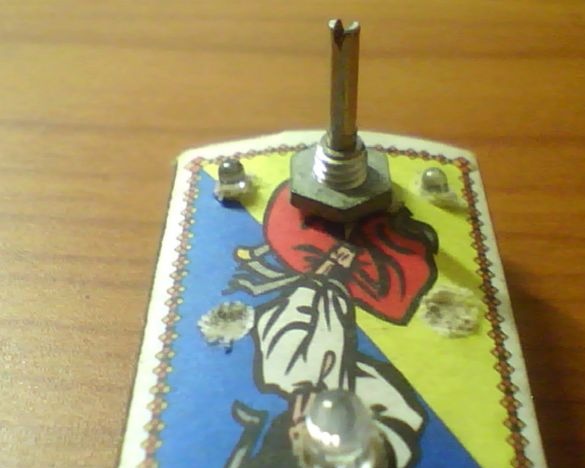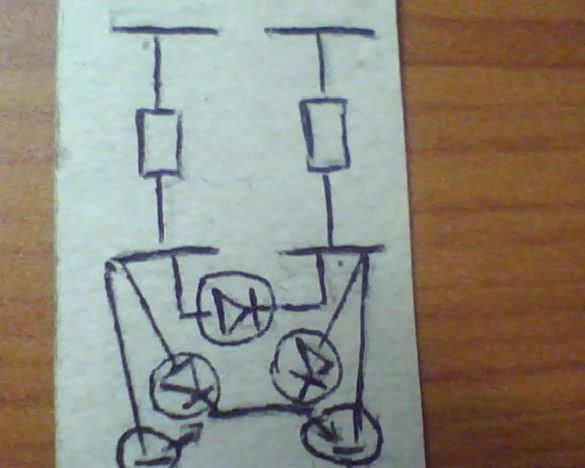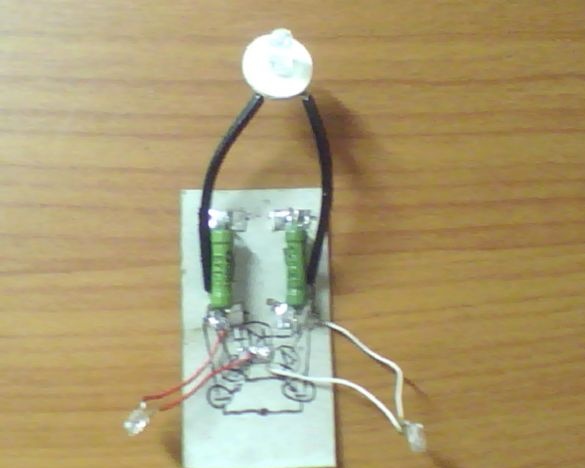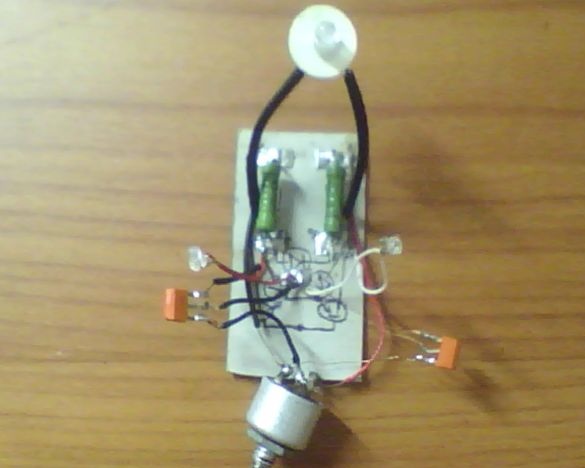In this article, the author proposes to consider the design of a voltage indicator on three LEDs.
The operation of the finished device looks like this: When the nominal voltage arrives, the central (green) LED lights up, when the voltage drops, the left (red) LED lights up, when the voltage rises, the right (red) LED lights up.
When setting the variable resistor in the "middle" position, all transistors will be closed, and the voltage will only be supplied to the green LED.
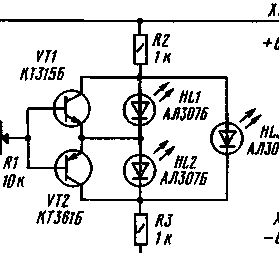
Moving the variable resistor slider up (raising the voltage) opens the transistor VT1, while the voltage supply to the LED HL3 stops and the voltage is supplied to the LED HL1. If the resistor slider is moved down (thereby lowering the voltage), this will close the transistor VT1 and open the transistor VT2, which will apply voltage to the LED HL2. This will cause a slight delay, the LED HL1 will stop glowing, the LED HL3 will flash once and finally HL2 will light up.
Necessary parts and tools:
- Soldering iron (tin and acid to it)
- R1 variable resistance 10 kOhm
- R2, R3 resistance 1 kOhm
- VT1 CT 315 B
- VT2 CT 361 B
- HL1 red LED
- HL2 red LED
- HL3– green LED
- X1 and X2 power supply in the form of 6V
(select LEDs with a supply voltage of 1.5 volts)
- Suitable housing for the device (the author used a matchbox)
All of these items may be present in old Soviet technology - televisions, tape recorders, radios.
To assemble the circuit, the author used a printed circuit board from cardboard, but the circuit can be assembled both on weight and you can use a PCB for it.
A scheme of the convenient arrangement of parts and their type is applied to the cardboard board. The size is respected 1: 1 with the original part, so that later everything fits.
For platforms, the author used such proluzhonny braces cut from a can of coffee (any suitable materials can be used).
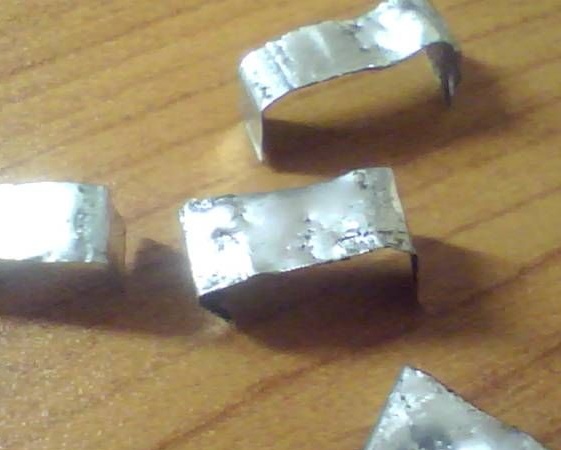
We attach brackets to the “board”.
Solder resistors and LEDs.
After we solder transistors and a variable resistor to control the system.
The diagram shows where the transistors output base, collector, emitter.
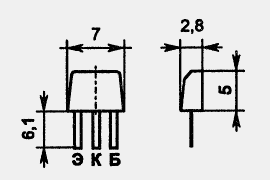
Next, it remains for us to place the finished board on any suitable case and the device will be completely ready for use.

